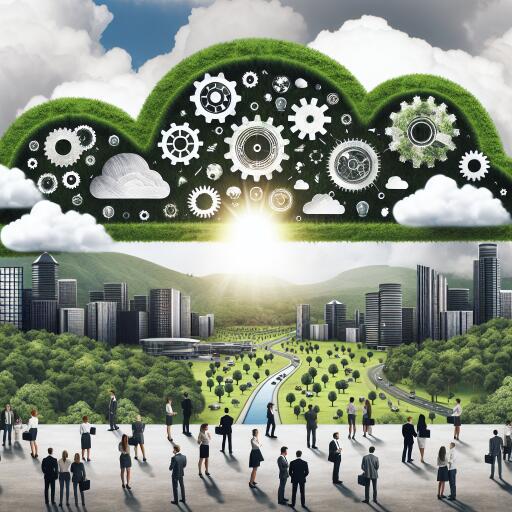The Cloud Revolution: Real-time Insights, Sustainability, and Strategic Transformation
By 2025, cloud computing will evolve far beyond its initial function as a mere service. It will become the powerhouse driving digital innovation and transformation.
Today, data no longer rests solely on remote servers; it operates dynamically at the edge, allowing for real-time insights while also ensuring privacy is maintained. The future of cloud computing is geared towards innovation, scalability, and sustainability.
In the years to come, the cloud will transcend its conventional role and emerge as a key enabler of digital transformation strategies. Technologies such as Kubernetes, Docker, hybrid and multi-cloud architectures, alongside edge computing, will redefine business operations. Moreover, a focus on data security and sustainability will ensure the cloud ecosystem not only supports enterprises but also advances global environmental goals. Selecting an optimal cloud service provider will be crucial for businesses to access cutting-edge technologies, robust security, scalability, and cost efficiency. This will allow organizations to adhere to regulatory requirements while seamlessly integrating with existing systems, making cloud adoption a pivotal driver of innovation.
Major Trends Expected to Dominate Cloud Computing by 2025
AI-Powered Cloud Solutions
The merger of artificial intelligence (AI) and cloud computing is set to revolutionize the industry by 2025. Enhanced automation capabilities will streamline complex tasks, such as resource allocation and anomaly detection, enabling businesses to focus more on innovation rather than operational upkeep.
Predictive analytics, driven by AI, will allow organizations to better anticipate market trends, optimize their processes, and improve customer experiences. With machine learning models, cloud platforms will offer real-time recommendations, resulting in smarter and more impactful business decisions.
Edge Computing
As IoT devices and real-time applications proliferate, edge computing is poised to transform multiple industries. By bringing critical computations closer to data sources, latency can be minimized, benefiting time-sensitive applications like autonomous vehicles and remote medical procedures.
Multi-Cloud Strategies
By 2025, many organizations will embrace multi-cloud environments to break free from single-vendor dependencies, thereby enhancing resilience and flexibility. This strategy allows businesses to allocate workloads across different cloud providers efficiently, improving performance and reducing costs. Advanced tools for unified management will streamline governance, security, and orchestration, making it easier to maximize the potential of multi-cloud setups.
Serverless Computing
Serverless architecture is predicted to become a preferred choice for developers, offering unmatched efficiency and convenience. With a cost-effective pay-per-use model, businesses can avoid overprovisioning of resources, allowing developers to focus solely on code, while cloud providers manage the infrastructure.
Kubernetes and Docker
Tools like Kubernetes and Docker are revolutionizing cloud computing and paving the way for the future. Kubernetes smoothly orchestrates containerized applications across different environments, while Docker provides consistent application performance across various platforms. By automating the deployment, scaling, and maintenance processes, these technologies free developers to concentrate on innovation, ensuring more reliable application delivery.
Hybrid-Multi-Cloud Architectures
As businesses aim to optimize their cloud environments, hybrid and multi-cloud strategies will become predominant. These approaches provide operational flexibility by allowing workloads to be spread across on-premises, private, and public clouds, ensuring businesses capitalize on each one’s strengths. By reducing dependence on individual vendors, multi-cloud environments enhance resilience and system continuity while streamlining cost-effective workload allocation without compromising performance.
Data Security in Cloud Computing
With cyber threats continually escalating, securing cloud environments remains a top priority. The zero-trust architecture enforces stringent identity verification at every level, diminishing the risks of unauthorized access. AI-driven threat detection uses machine learning to identify and address potential breaches in real-time, while advanced encryption techniques protect data in transit and at rest.
Sustainability in the Cloud
Energy-efficient data centers powered by renewable energy and AI-enabled cooling systems are reducing carbon footprints. Circular hardware models prioritize component recycling, waste reduction, and resource efficiency.
The future of cloud computing transcends mere technological advancement. It offers strategic advantages that can reshape the landscape of business practices.










